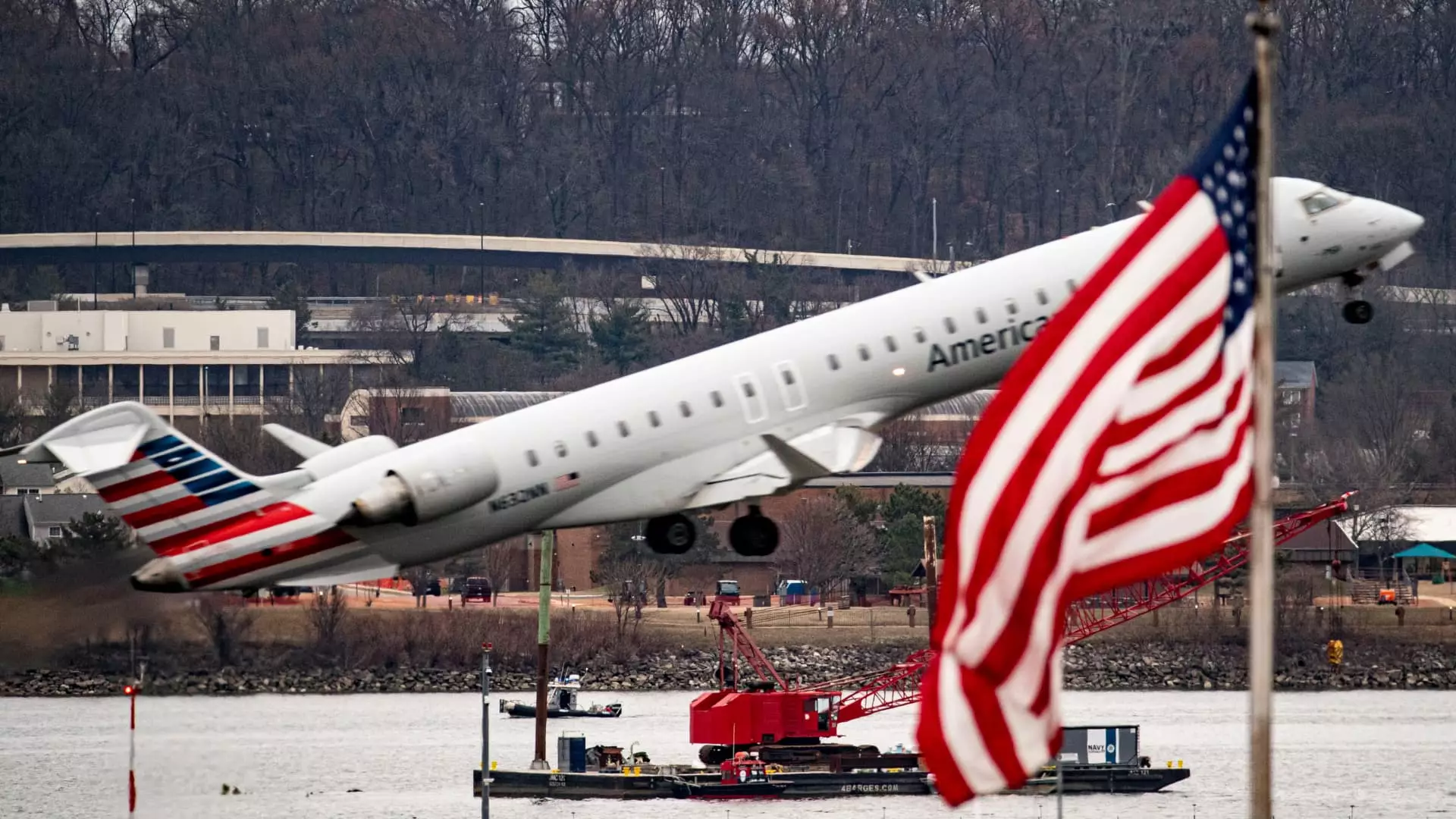In the wake of a shocking aviation disaster that claimed the lives of 67 individuals, U.S. Transportation Secretary Sean Duffy is calling for a radical reform of the nation’s airspace management. The collision between an Army Black Hawk helicopter and an American Airlines regional jet near Ronald Reagan Washington National Airport stands as the deadliest aviation accident in the United States in over two decades. This tragedy has sparked a nationwide discussion about safety protocols, air traffic control systems, and the integration of advanced technologies in what is increasingly becoming a congested airspace.
The urgency of Duffy’s comments becomes evident when one considers the potential for technology-driven innovations to enhance airspace management. He recently spoke with Elon Musk, the visionary CEO of SpaceX, who has previously undertaken ambitious projects that have reshaped various industries. Duffy hopes that such innovative thinking can be applied to the complexities of managing air traffic, including both commercial planes and military helicopters.
The U.S. airspace has long faced challenges related to congestion and management inefficiencies. With the rise in commercial flights and an increased reliance on military training operations, the need for a modernized air traffic control system has never been more pressing. Duffy’s remark about the single air traffic controller handling both helicopter and airplane traffic during the tragic incident illustrates a systemic issue that cannot be ignored. The need for additional personnel and modern technology to support efficient air traffic management is not just a logistical concern but a necessary step in ensuring the safety of all air travelers.
For years, airline executives have urged Congress to allocate more funds for the modernization of air traffic control systems. The apparent scarcity of air traffic controllers exacerbates the situation, making it even more critical to address these issues comprehensively. Unfortunately, discussions surrounding these topics often get mired in bureaucracy and slow-moving political processes, which can delay essential reforms.
Duffy’s discussions with Musk represent a vital intersection of government and private innovation. Musk’s significant contributions to technology, particularly in aerospace with SpaceX, bring valuable insights into effective airspace management. By leveraging such technologies, Duffy envisions a quicker and more efficient way to overhaul existing air traffic control protocols. This collaboration could pave the way for Smart Airspace Systems that utilize real-time data to manage both commercial and military air traffic, thereby reducing the chance of future accidents like the recent tragedy.
Furthermore, Musk’s involvement suggests a shift towards a more results-driven approach within the government, especially regarding key initiatives related to airspace management. His experience with complex logistical operations could potentially result in the adoption of best practices that ensure safety without compromising operational effectiveness.
Duffy’s comments also highlight a crucial aspect of airspace utilization: the practices of military operations in civilian airspace. The transportation secretary emphatically stated that it is unacceptable for military generals to use helicopters for convenience when cars would suffice. This blunt critique opens the door for a reevaluation of military training protocols, particularly concerning night operations in crowded airspace.
As discussions continue regarding the balance between military needs and civilian safety, it is essential for both the Department of Defense and the Transportation Department to collaborate closely. Effective communication and the establishment of guidelines that prioritize public safety while still accommodating military requirements will be paramount in shaping the future of U.S. airspace.
The recent aviation tragedy serves as a catalyst for critical reforms within U.S. airspace management. Secretary Duffy’s commitment to revisiting policies, combined with the potential for technological advancements through collaborations with innovators like Elon Musk, offers a glimmer of hope for a safer airspace environment. It is crucial, however, that these discussions lead to actionable policies and that all stakeholders, including lawmakers, aviation officials, and military leaders, engage in a collaborative effort to enhance safety. As the investigation into the crash continues, the insights gained could ultimately point towards a new era of air travel that is characterized by safety, efficiency, and innovation.


Leave a Reply